Exploring the Link Between Logic and Music Dynamics
Intro
Music and logic may seem like different worlds, but they often twine together in profound ways. At the heart of music composition lies a myriad of structural principles that mirror logical reasoning. This article delves into how these two realms intersect, begging the question: how do logical frameworks shape our understanding and appreciation of music?
By looking at historical backgrounds, mathematical underpinnings, and cognitive aspects, we'll uncover the deep-rooted connections that link these two fields. But let’s not get ahead of ourselves—first, let's understand the artists who have navigated these waters skillfully.
Preface to Logic and Music
The relationship between logic and music is a vast and intricate landscape that deserves exploration. Understanding this intersection unveils the structured frameworks that underpin musical compositions, enriching both the creation and appreciation of music. It offers vital insights for musicians and educators alike, providing tools that enhance both technical skills and artistic expression. By investigating how logical reasoning intertwines with musical creativity, we can appreciate music not just as an art form, but as a discipline that marries creativity with structured thought.
Defining Logic in Music
To delve into this topic, one first needs to clearly define what we mean by logic in the realm of music. Logic can be regarded as the underlying principles that govern musical structure, harmony, and rhythm. It involves patterns, sequences, and relationships among notes and sounds. For example, think about a simple scale. It is a logical sequence of pitches, providing a foundation upon which melodies and harmonies are built.
In practical terms, when a composer chooses which notes to play, they often do so by adhering to certain logical rules based on scales, chords, and harmonic progressions. Furthermore, genres have their logical conventions. Classical compositions often rely on strict forms like sonatas and symphonies, while jazz might employ more fluid logic in improvisation, even though it follows certain chordal structures.
This idea of logic extends into the cognitive realm. A listener’s ability to perceive music often relies on recognizing these patterns. Studies show that when people hear musical pieces, their brains are constantly looking for predictability and structure, making sense of what they hear based on learned musical logic that they've absorbed over time.
Historical Context of Music and Logic
When tracing the historical roots of logic in music, one finds a rich tapestry interwoven with philosophical thought. Ancient civilizations, like the Greeks, posited music theory alongside mathematics. Pythagoras famously connected sound frequencies with numerical ratios, suggesting a profound link between mathematical principles and musical harmony.
As history unfolded, thinkers like Boethius in the Middle Ages advanced these concepts by introducing the idea of music as a reflection of cosmic order, where logical structures governed both the universe and musical phenomena.
During the Renaissance, the notion of harmony evolved further, giving rise to counterpoint. Composers began using more complex logical structures in their works, allowing multiple voices to harmonically interact while adhering to a set of rules. This period set a precedent for logical analysis in music that extends to modern educational practices.
Today, the study of music theory is steeped in this historical context, guiding music students in their understanding of how logic shapes compositions. The evolution of musical forms, genres, and styles showcases a continuous dialogue between logic and creativity throughout centuries.
In summary, defining logic and appreciating its historical context primes one to recognize the pervasive influence of structure in music. This foundation will serve as a stepping stone to exploring deeper theoretical underpinnings and cognitive processes involved in understanding music.
Theoretical Foundations
The theoretical foundations of music provide the essential framework through which enthusiasts and creators can grasp the intricate relationship between musicality and logic. Understanding these foundations aids musicians and music students in recognizing the deeper structures that govern compositions, revealing how mathematical principles and logical constructs serve as the backbone of harmonious sound. In essence, analyzing music through the lens of logic not only enhances one's skill in creating music but also enriches the overall listening experience by bringing clarity to complexity.
Mathematics as the Language of Music
Mathematics isn’t just a subject confined to textbooks; it’s an intrinsic part of music theory. The connection between numbers and melodies often leads to a fascinating exploration of rhythm, harmony, and tune creation. For instance, scales, which form the bedrock of many musical pieces, are built on mathematical ratios. The simplicity of a major scale can be distilled into a sequence of whole and half steps, a pattern that resonates throughout various musical traditions.
Moreover, consider the Fibonacci sequence, a mathematical phenomenon that crops up in nature, art, and yes, music too. Some composers have incorporated this sequence into their compositions, crafting a rhythm or melody that evolves predictably while remaining engaging. Balancing mathematics and artistry, such works exemplify how numbers can breathe life into sound.
Musical Notation and Logical Structure
Musical notation is a language of its own, serving as the primary means of communicating and preserving musical ideas. Within this notation, one can observe clear principles of logic at play. The arrangement of notes on a staff, the use of time signatures, and the logical progression from one chord to another—all reflect structured thinking.
For example, time signatures, like 4/4 or 3/4, dictate how rhythm should be perceived, lending a framework that musicians must navigate meticulously. A quick glance at a piece of sheet music can reveal a tapestry woven with logical intervals that convey intended emotions.
When musicians interpret these notations, they often rely on established patterns, tapping into long-standing musical traditions. Each stroke of a pen transforms sound into a logical sequence, where every symbol signifies an action that contributes to the overall coherence of a composition.
Patterns and Algorithms in Composition
The heart of composition lies in patterns. Just as mathematical theories often hinge upon repetitive structures, so does music depend on recurring themes and motifs. Many composers, from Bach to contemporary artists, engage with these patterns deliberately, whether through harmonic progressions or rhythmic loops.
Algorithms, too, play a role in the modern compositional landscape, especially with the advent of technology in music creation. For instance, software applications can generate musical ideas based on algorithmic rules. These programs can analyze existing music to produce variations, leading to innovative compositions. One might think of this process as a conversation between logic and creativity, where mathematical algorithms guide the hand of the composer.
"Music is an outburst of the soul. But at its core, it is a logical construct, molded by underlying patterns and structures."
Understanding the theoretical foundations in music illuminates how logical frameworks can enhance one's musical journey. By embracing the mathematical principles and logical patterns inherent in music, musicians can develop a deeper connection with their art, enriching both composition and appreciation. As we delve into the next sections, this foundation will provide a dimension of understanding that informs our exploration of music genres and emotional expressions.
Cognitive Processes in Music Listening
The significance of understanding cognitive processes in music listening can’t be overstated. It dives into how our brains engage with music—not just as passive listeners but as active participants deciphering patterns, emotions, and structures within the sound. In this realm, music transcends mere entertainment, positioning itself as an intellectual exercise that engages our logic and reason. Recognizing this interplay can enhance both the appreciation and creation of music.
How the Brain Interprets Musical Patterns
Our brains are wonderfully wired to pick up on musical patterns, often without us even realizing it. This ability to recognize and interpret patterns is deeply rooted in cognitive psychology. For example, when someone hears a melody, they are not just absorbing sounds; they are instinctively decoding timing, rhythm, and harmony. Neuroscientific studies show that specific areas of the brain light up when we listen to music, resembling those activated during problem-solving tasks. The cerebral cortex, responsible for processing information, plays a prominent role here.
- Chunking Information: Just like our brain processes language through chunks of information, it does the same with music. We gather pitch sequences into recognizable phrases, similar to how we comprehend sentences.
- Predictive Coding: Our minds work ahead of the notes. For instance, when a song seems to build toward a climax, listeners often anticipate what comes next. This concept of predictive coding indicates that our brains are not just processing sound but are making educated guesses about the music as it unfolds.
When engaged with various musical traditions, our cognitive framework adapts. A person familiar with classical music may notice patterns that differ from those present in jazz, where rhythm tends to be more fluid. These cognitive processes aid in the emotional connection we feel toward different genres and highlight the inherent logics governing each.
Logical Reasoning and Musical Interpretation
The relationship between logical reasoning and musical interpretation is profound. Listening to music isn’t a straightforward endeavor; it entangles our reasoning abilities with emotional experience. Musicians often utilize logical frameworks when crafting their pieces, making it crucial for listeners to interpret the work effectively.
- Structural Analysis: When a listener examines a piece of music, they often apply logical reasoning by analyzing its form. Is it in sonata form? Does it follow a predictable structure such as verse-chorus? Knowing these elements allows listeners to connect the dots in a more meaningful way, enhancing their overall experience.
- Creative Logic: Each genre has its own set of rules that contribute to its identity. For example, in jazz, improvisation relies on harmonic and rhythmic logic. A jazz musician might follow a certain chord progression but introduce unexpected variations, challenging listeners to keep up and adapt their understanding.
"Music is the shorthand of emotion."
— Leo Tolstoy
This statement reflects how logical structures govern not just the composition of music but also its interpretation. Every note and pause can convey complex emotions when viewed through a logical lens. In essence, the interplay between reasoning and music reveals how deeply entwined these disciplines are, creating an enriching experience that resonates on multiple levels.
Understanding these cognitive processes emphasizes the art and science of music, showing that appreciation for sound is as much an intellectual pursuit as it is an emotional one. Engaging with the logical underpinnings of music can foster a deeper connection, opening the door to both analytical exploration and personal resonance.
Comparative Analysis of Genres
In the realm of music, genre serves as a distinct lens through which we can analyze not only the sound itself but also the underlying logic that crafts those sounds. This section endeavors to embrace that complexity, unveiling how disparate musical traditions engage with logical structures to produce unique auditory experiences.
Exploring various genres enables us to discern patterns that might escape a casual listen; it brings to the fore the intricate balance between emotion and analytical thought. This comparative analysis is not just about cataloging differences but also appreciating the diverse methodologies that musicians utilize in their compositions. By examining genres from a logical viewpoint, we uncover the technical frameworks that influence their creation and perception.
Classical Music: A Mathematical Perspective
Classical music, often regarded as a bastion of mathematical beauty, reflects advanced logical constructs. The usage of counterpoint, harmony, and form showcases how composers like Bach and Beethoven applied mathematical principles in their work. The symmetrical phrases, often found in sonata form, mirror the balance seen in mathematics—elegant in their complexity.
Temporal structures such as the Fibonacci sequence or the golden ratio can sometimes be observed in composition. For example, composers have been known to structure their pieces so certain key moments occur at intervals that echo these mathematical constants. Classical forms emphasize development and resolution, capturing the listener's attention through logical escalation of motifs. Each note, much like an equation, serves to build on previous ideas, creating a coherent musical argument.
Jazz: Improvisation within Logical Frameworks
Jazz offers a fascinating contrast to classical music with its focus on improvisation, yet it still holds firm to logical underpinnings. Musicians often rely on established chord progressions while integrating scales and modes that dictate their melodic choices. For example, the 12-bar blues is a common form steeped in predictable patterns that musicians can manipulate through improvisation.
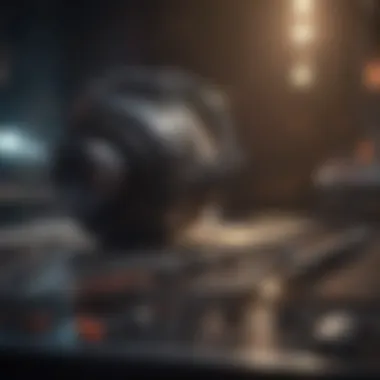

The logic in jazz also emerges in its rhythmic approach, often employing syncopation or polyrhythms. Such elements can create tension and resolution, paralleling the narratives found in storytelling. Musicians like Miles Davis, through modal jazz, shifted the focus away from complex chord changes, encouraging improvisers to explore melodies within a logical framework that emphasized tonal centers over traditional harmonic progression.
Contemporary Music Trends and Logical Constructs
Contemporary music often exemplifies a blend of traditional forms juxtaposed with modern technological influences and cultural elements. Genres such as electronic dance music (EDM) or hip-hop rely on both logic and creativity in their production processes. The sampling techniques and beat-making software guide musicians through a logical arrangement of sound, often requiring an understanding of musical structure and rhythm.
Today's artists merge various logical frameworks across genres, creating composite soundscapes. Artists like Kanye West earn acclaim not only for their artistic vision but also for the logical sampling methods that give life to their music. The analysis of these trends illustrates how emotions intertwine with calculations in music production, leaving ample ground for further discourse on future trajectories in music.'
"Music is a common language that speaks to the spirit, using logic to form its vocabulary and structure."
Through this reflection on genres, we recognize that music is not merely an art form. It embodies a rich tapestry interwoven with logical reasoning, mathematical principles, and cultural contexts that enrich our understanding of the world around us.
The Emotional Aspect of Music Logic
Music has a unique ability to stir emotions. This quality makes it a fascinating subject for examination under the lens of logic. Understanding the emotional aspect of music logic can enrich both the creator's and listener's experiences. Here, we unravel how emotions and logical patterns intertwine, producing results that resonate deeply.
Logic in music doesn’t strip it of feeling; instead, it enhances the emotional experience. For instance, composers often use specific chord progressions to evoke distinct moods. The logical arrangement of notes and harmonies serves as the groundwork for expressing complex emotions. This generates a bridge between intellect and feeling, providing insightful connections for aspiring musicians and music enthusiasts alike.
Emotional Responses and Logical Patterns
The way listeners respond to music can often be linked back to logical structures embedded in the composition. It is an understanding that reveals the beauty of music: a series of logically arranged notes can incite tears, laughter, or nostalgia, even before you capture the lyrics.
- Major and Minor Scales: Major scales often create a sense of happiness or brightness, whereas minor scales tend to evoke sadness or melancholy. This phenomenon is not just coincidence; it’s deeply rooted in the logical relationships between the notes.
- Tempo and Emotion: The speed and rhythm of a musical piece also induce emotional responses. A lively tempo might invoke excitement or joy, while a slow, languid rhythm can conjure feelings of introspection or sorrow.
“Music is the shorthand of emotion.”
— Leo Tolstoy
Consider a piece like Beethoven's Moonlight Sonata. While it's recognized for its beauty, the logical construction behind the piece features deep emotional undercurrents. Each movement employs specific patterns and sequences, logically guiding the listener through an emotional landscape.
Dissecting the Connection Between Emotion and Structure
Digging deeper, we must assess how logical structures in music direct emotional output. Taking apart a piece reveals specific mechanisms that move listeners. One might think of music as a language—each element serving a purpose:
- Repetition: Repeating melodies plant emotional hooks in our memories, allowing feelings to resurface during familiar passages.
- Dynamics: Variations in volume can accentuate emotions. A sudden crescendo may heighten a feeling of excitement or anticipation.
- Transitional Elements: Modulating between different keys creates tension and release, further amplifying emotional responses.
To illustrate, let’s discuss a classic tune like "Creep" by Radiohead. The strategic use of space and dynamics crafts a pervasive sense of longing and isolation. Through a logical yet heartfelt arrangement, the structural elements blend seamlessly to enhance the emotional layer, captivating listeners.
Technological Advancements and Music Logic
The landscape of music has been redrawn by rapid technological advancements, melding the realms of logic and creativity in remarkable ways. As tools have evolved, so too has the ability of composers to weave intricate musical narratives using structured logical frameworks. This section delves into the significant impact of technology on music logic, bringing to light how today's musicians take advantage of these innovations.
One key consideration is artificial intelligence—specifically, how it’s reshaping music composition. AI applications embed logical algorithms into music production, offering a unique lens through which compositions can be analyzed, structured, and created.
"Technology doesn't just change music; it transforms the way we think about its very essence."
Additionally, music software plays a pivotal role in this transformation. Equipped with sophisticated analytical tools, software aids musicians in understanding the logical composition of their work, highlighting patterns that may go unnoticed without such assistance.
AI and Music Composition: A Study in Logic

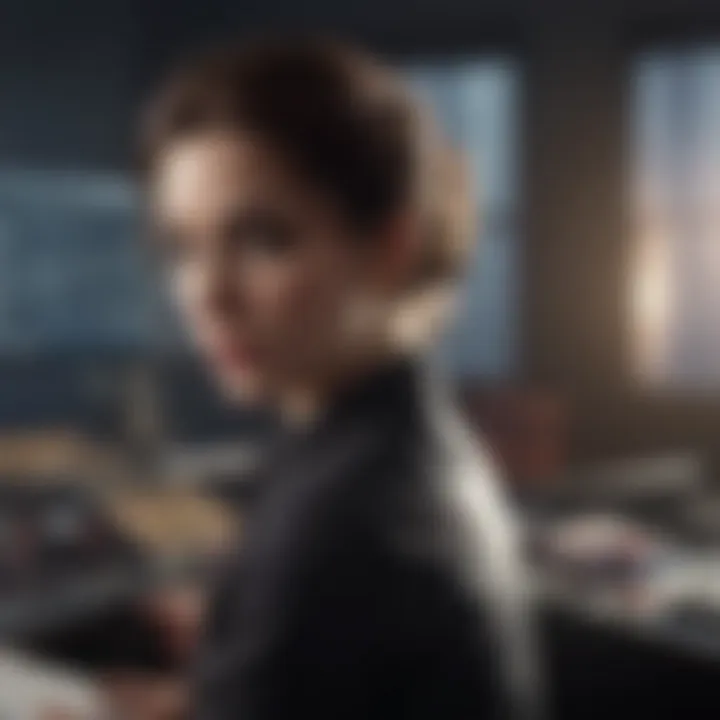
AI in music composition is a field bursting with potential. Software like OpenAI's MuseNet and AIVA are examples of how machines can generate original scores that reflect various genres by utilizing learned patterns from existing music. These tools operate on complex algorithms, recognizing shifts in dynamics, harmony, and even emotional intensity, thus simulating a form of musical reasoning akin to human compositional practices.
The impact of AI on creativity cannot be sidelined. In fact, it poses fascinating implications for collaboration between human musicians and machine-generated output. For example, a musician might use AI-generated riffs as foundational elements, then skillfully restructure and enhance those ideas, creating a piece rooted in logic yet overflowing with personal artistry. The relationship is symbiotic—AI enhances logical precision while musicians inject the emotional essence into the final product.
The Role of Software in Analyzing Musical Logic
Music software has become a vital ally, enabling musicians to glimpse the inner workings of their compositions. Many programs run complex analyses that break down pieces into their logical components�—measures, motifs, and chord progressions. Through visual representations, like score notation, musicians can see patterns and structures that inform their creative decisions.
Examples of this software include Sibelius, Finale, and Logic Pro, each specializing in different aspects of music creation and analysis. They help musicians to:
- Analyze chord structures: seeing how they relate in different contexts.
- Understand rhythmic patterns: determining how variations influence the overall feel.
- Compose with templates: offering logical frameworks to spark creativity.
Moreover, many of these tools integrate AI capabilities, further bridging the gap between logical analysis and creative output.
Future Implications of Music Logic
The landscape of music is continuously evolving, influenced by advances in technology, changing societal norms, and emerging artistic expressions. As we peer into the future, the implications of music logic become increasingly crucial. These implications shed light on how we approach composition, performance, and even consumption of music in the digital age.
Evolving Musical Frameworks in a Digital Age
The rise of digital technology has transformed how music is created and experienced. New tools and software are reshaping musical frameworks, allowing artists to explore innovative ways to construct harmonies, rhythms, and melodies. Some notable developments in this evolution include:
- Algorithmic Composition: This method taps into computer algorithms to generate music. It creates endless possibilities, fostering a hybrid of human creativity blended with logical structures. Artists can now use software like Ableton Live or Max/MSP to experiment, producing compositions that transcend traditional boundaries.
- Sampling and Remix Culture: In today's music industry, artists often engage in sampling existing works, recontextualizing them within fresh frameworks. This practice introduces circular logic, where past and present intermingle, forming a new, dynamic sound.
- Interactive Music Systems: Unlike the static form of traditional music, technologies now enable interactive experiences where listeners can influence the music in real time, adding a layer of logical interaction seldom seen before. Applications like Endel create soundscapes that adapt to environmental factors, merging logic, music, and the user experience.
As these frameworks evolve, they provide musicians with the tools to navigate and manipulate the logical structures of music in unprecedented ways. This evolution challenges artists to push their creative boundaries, often eliciting responses that provoke thought, innovation, and discourse within the wider music community.
The Ongoing Relationship between Logic and Creativity
The interplay between logic and creativity is a dance that shapes the essence of music. While resistance to strict formats may appear dominant within the realm of artistic expression, the underlying logic serves as a foundation upon which creativity flourishes. Key aspects of this relationship include:
- Structure as a Canvas: Many artists find solace within the constraints of logical frameworks when crafting their works. Composers like J.S. Bach exemplified this, utilizing intricate counterpoint that adhered to strict rules, yielding masterpieces that still resonate today. Logic often acts as a canvas upon which creativity thrives, revealing that rules are not merely limitations but also gateways to inspiration.
- Emergence of New Genres: Logic can guide the formation of new genres by presenting a pathway through which musicians can explore unique areas of fusion. For example, fusion genres like jazz-hop marry rhythmic precision with improvisation, demonstrating the flexible nature of logical frameworks in their creative expansion.
- Balancing Emotion and Rationality: Creativity steeped in logic doesn’t negate emotional depth; rather, it amplifies it. The tension between structured arrangements and spontaneous expression can lead to emotionally charged music. Berg’s opera "Wozzeck" is a prime example; it uses logical elements that heighten the emotional landscape.
The ongoing relationship between logic and creativity paves the way for groundbreaking works that redefine musical boundaries. As both elements continue to interact, the future of music promises to be an engaging exploration of what it means to create within a structure.
"In every piece of music, the patterns of logic are hidden beneath layers of emotion and expression."
As we ponder these future implications, it becomes evident that understanding music through a logical lens not only enriches the artistry but inspires emerging musicians to reimagine the craft. The continued exploration of this intersection challenges our conceptions of what music can be, expanding our horizons to embrace the unexpected.
End: The Enduring Connection
As we draw this exploration to a close, it’s clear that the bond between logic and music is not merely an academic curiosity; it’s a fundamental aspect of human creativity and cognition. This conclusion emphasizes the importance of recognizing how these two seemingly disparate worlds intertwine in ways that can be both enlightening and inspiring.
Summarizing the Interwoven Nature of Logic and Music
The relationship between logic and music unfolds on many layers, offering an intricate tapestry of ideas and principles. Not only do mathematical frameworks govern the structures of musical compositions, but they also resonate deeply within our cognitive understanding of music itself.
Consider this:
- Compositional Structures: Music is replete with patterns, sequences, and forms that mirror logical arrangements. From sonata forms in classical music to the improvisational structures found in jazz, the use of logical frameworks allows composers to build intricate works that can evoke profound emotional responses.
- Cognitive Processing: When listening to music, our brains engage in a continuous process of pattern recognition. This logical assessment of sound aids in our ability to appreciate and understand complex musical ideas, illustrating how intertwined our cognitive function is with musical experience.
- Mathematics and Creativity: While mathematics may seem rigid, it fosters creativity in music. A composer who understands the mathematical ratios of harmony or the physics of sound can innovate within those frameworks, pushing the boundaries of traditional genres to create novel expressions.
"Music is the shorthand of emotion." - Leo Tolstoy
In summary, the enduring connection of logic and music speaks to a universal truth: the structures that guide our creative endeavors are fundamental in shaping not just the art itself but our perception of it. Recognizing these connections opens our minds, allowing us to appreciate the intricate dance between structure and spontaneity, logic and creativity.
Whether one is a novice musician or a seasoned composer, understanding this connection can enhance both the process of creation and the experience of listening, highlighting an enriching journey that resonates with many aspects of human experience.







